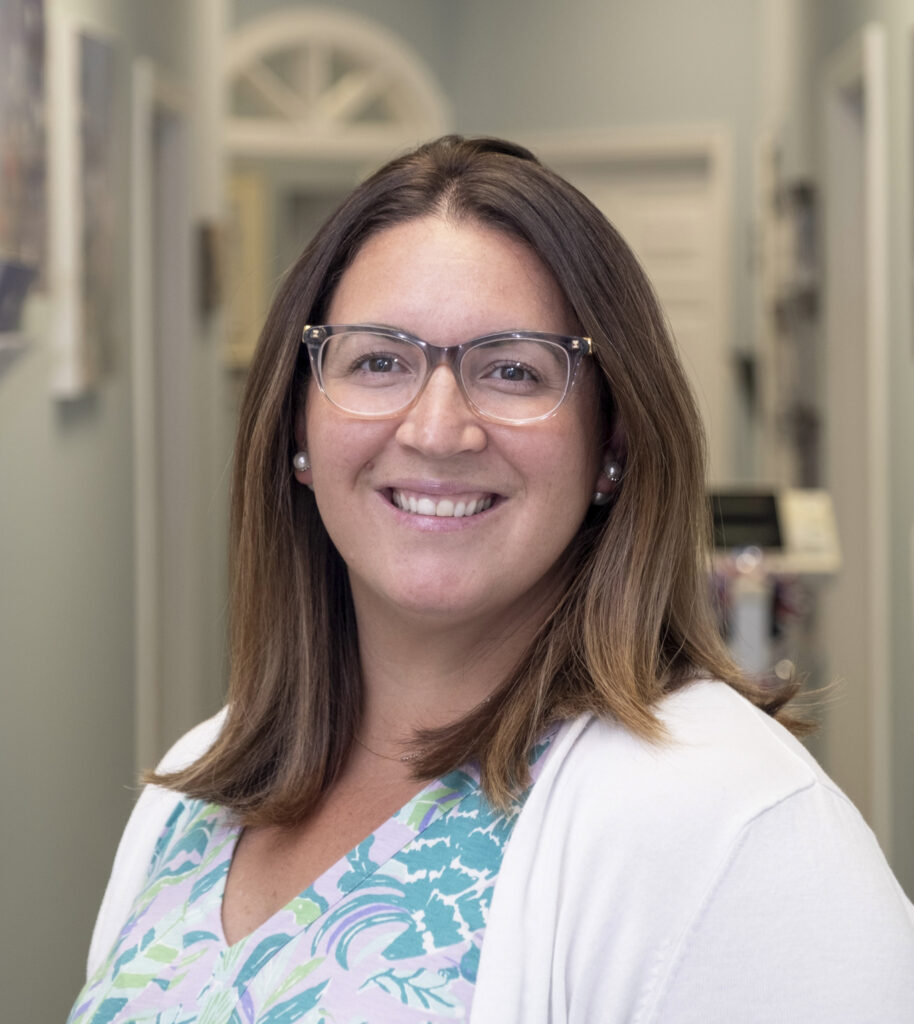Science News recently reported an exciting new experimental treatment for endometriosis, a painful gynecological disease that affects some 190 million people worldwide.
Although it is in the early stages of testing, Charissa Wright, ARPN, a nurse practitioner at Steward Health Care’s Steward Coastal Gynecology Specialists, says it’s exciting news.
“Even though it’s still in Phase 1, the important thing is that this research is being done.”
In the treatment being tested, monthly antibody injections reversed telltale signs of endometriosis in monkeys that were surgically modified to have the disease, researchers reported in Science Translational Medicine.
The antibody targets IL-8, a molecule that whips up inflammation inside the scattered, sometimes bleeding lesions that mark the disease. After neutralizing IL-8, those hallmark lesions shrink, the team found. The antibody actually acts like a garbage collector, grabbing the IL-8, delivering it to the cell’s waste disposal machinery, and then heading out to snare more.
The new treatment is “pretty potent,” says Philippa Saunders, a reproductive scientist at the University of Edinburgh who was not involved with work. The study’s authors haven’t reported a cure, she points out, but their antibody does seem to have an impact. “I think it’s really very promising,” she says.
According to Mayo Clinic, the symptoms of endometriosis include:
• Painful periods
• Pain during and/or after sex
• Pain during urination and defecation
• Heavy menstrual bleeding or bleeding between periods
• Infertility
• Fatigue
• Diarrhea and/or constipation
• Bloating and/or nausea
Even though endometriosis is a common gynecological disease, it can take years before it is diagnosed.
Wright says that endometriosis occurs in prepubescent to post-menopausal patients. One of the reasons it’s so difficult to diagnose is that it doesn’t show up on any imaging tests that are currently performed. “It’s challenging because some cases are asymptomatic and some bring debilitating pain,” says Wright. “It really is its own animal.”
The disease affects at least 10 percent of girls, women and transgender men in their reproductive years. And people typically suffer for years – about eight on average – before a correct diagnosis. “Doctors consider menstrual pelvic pain to be a very common thing,” says Wright.
WebMD says that endometriosis occurs when tissue similar to the tissue that lines the uterus grows outside the uterus. This tissue acts as regular uterine tissue does during menstration, breaking apart and bleeding at the end of the cycle.
But this blood has nowhere to go. Surrounding areas may become inflamed or swollen.
There can be scar tissue and lesions. The lesions can grow nerve cells, form tough nubs of tissue and even bleed during menstrual cycles. They can also kick off chronic bouts of pelvic pain.
Although there is currently no cure, the Endometriosis Association outlines treatments and coping methods that are available. They include:
• Pain medication – Over-the-counter pain relievers may include aspirin and acetaminophen, as well prostaglandin inhibitors such as ibuprofen, naproxen sodium, indomethacin and tolfenamic acid. In some cases, prescription drugs may be required.
• Hormonal therapy – Hormonal treatment attempts to stop ovulation for as long as possible and may include oral contraceptives, progesterone drugs, a testosterone derivative (danazol) and GnRH agonists (gonadotropin-releasing hormone drugs). Side effects may be a problem for some women.
• Surgery – Conservative surgery seeks to remove or destroy the growths, relieve pain, and may allow pregnancy to occur in some cases. This surgery can involve laparoscopy. Hormonal therapy may be prescribed along with conservative surgery. Radical surgery, which may be necessary in severe cases, involves a hysterectomy, removal of all growths and removal of ovaries.
• Alternative treatment – Complementary endometriosis treatment options may include traditional Chinese medicine, nutritional approaches, homeopathy, allergy management and immune therapy.
Diagnosing endometriosis is challenging. Some medical facilities require that the patient have a biopsy. The condition is best diagnosed by a subspecialty of gynecologic pathologists who focus on gynecologic conditions and are familiar with rare types of endometriosis that may occur. The good news is that women with endometriosis don’t need to worry about an increased cancer risk.
Wright says it’s possible that genetics (either on maternal or paternal side) play a part, as do early onset menses and late-age menopause. “There’s no way to prevent it,” she says.
“But you should try to optimize your overall health, lifestyle and diet so that you minimize naturally occurring inflammation.”
“As a nurse practitioner, my goal is to have a relationship built on trust with my patients. This is not ‘one size fits all’ healthcare because everything about endometriosis is patient specific.”
Charissa Wright, ARPN, received her medical training at Simmons College Medical School, Boston. She practices at Steward Health Care’s Steward Coastal Gynecology Specialists, 840 37th Place, Suite 1, Vero Beach. The phone number is 772-567-6412. She is currently accepting new patients.

